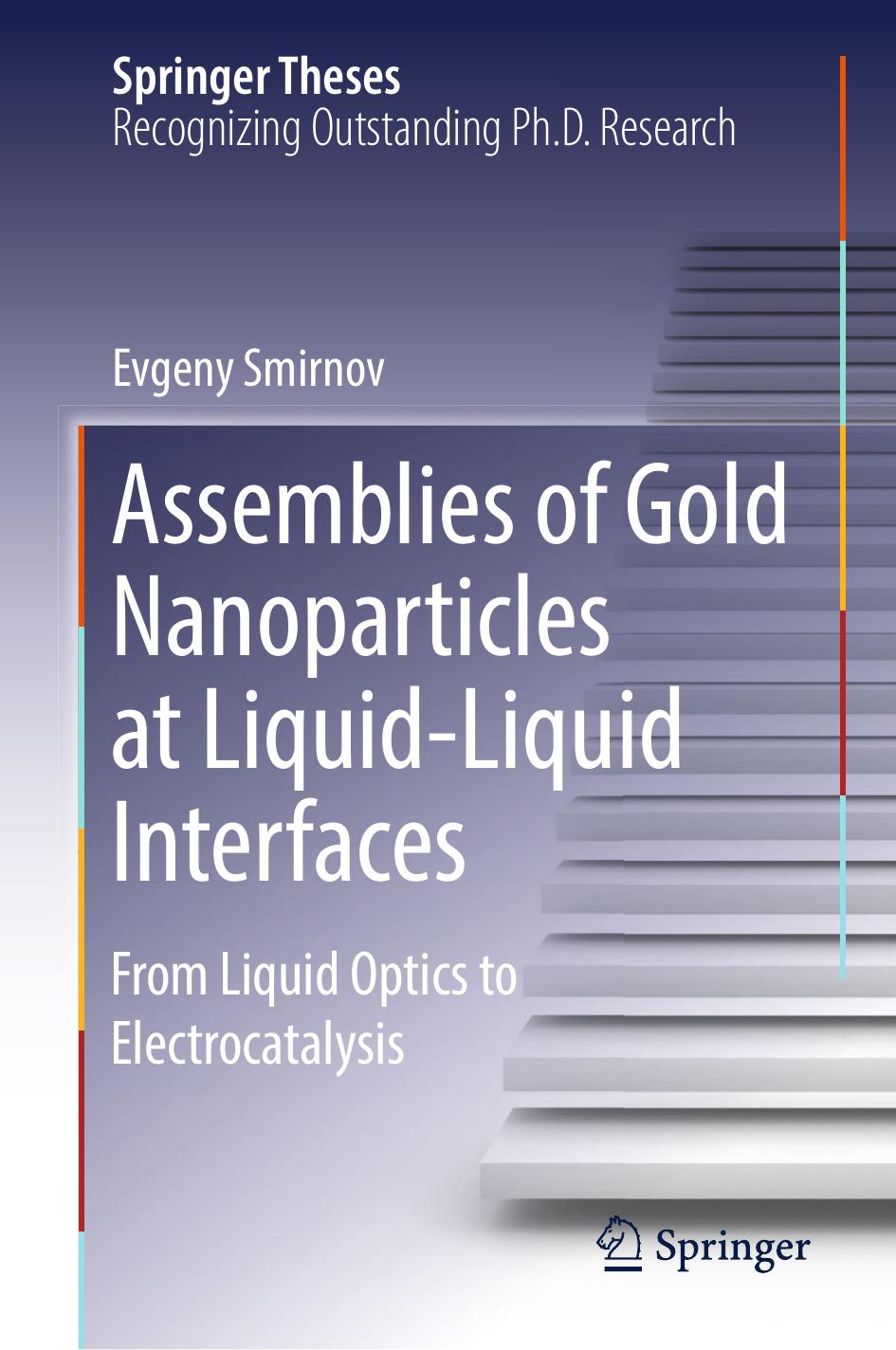Assemblies of Gold Nanoparticles at Liquid-Liquid Interfaces by Evgeny Smirnov

Author:Evgeny Smirnov
Language: eng
Format: epub, pdf
Publisher: Springer International Publishing, Cham
4.2.3 Monitoring the Morphology of the Interfacial Gold Nanofilms with Increasing by Scanning Electron Microscopy (SEM)
The interpretation of the extinction and reflectance spectra for interfacial nanofilms formed with 38 nm Ø (Fig. 4.1) and 12 nm Ø (Fig. 4.2) AuNPs was dependent on the existence of three distinct morphological regimes of the AuNPs at the interface, each of which scattered light to varying degrees, as a function of .
To confirm their existence, we transferred interfacial gold nanofilms formed in a stepwise manner with 38 nm Ø AuNPs at a series of conditions (from 0.1 to 2.0 ML) to silicon substrates and obtained SEM images of each (Fig. 4.3). Obviously, transfer and drying of nanofilms on silicon substrates may cause deviation in particles position. To avoid misinterpreting of the obtained SEM data, we also carried out in situ optical microscopy.
Fig. 4.3Micro- and nanoscale mechanisms of decreasing reflectance caused by morphological changes. Comparison of in situ optical microscopy images (50 × magnification) and ex situ SEM images of the interfacial gold nanofilms transferred to a silicon substrate. The coverages of the interface () in monolayer are as follows: a 0.1 ML, b 0.2 ML, c 0.4 ML, d 0.6 ML, e 0.8 ML, f 1.0 ML, and g 2.0 ML. Scales bars are from left to right 10 µm, 400 nm, and 200 nm.
Reproduced from Ref. [53] with permission from The Royal Society of Chemistry
Download
Assemblies of Gold Nanoparticles at Liquid-Liquid Interfaces by Evgeny Smirnov.pdf
This site does not store any files on its server. We only index and link to content provided by other sites. Please contact the content providers to delete copyright contents if any and email us, we'll remove relevant links or contents immediately.
| Automotive | Engineering |
| Transportation |
Whiskies Galore by Ian Buxton(41536)
Introduction to Aircraft Design (Cambridge Aerospace Series) by John P. Fielding(32893)
Small Unmanned Fixed-wing Aircraft Design by Andrew J. Keane Andras Sobester James P. Scanlan & András Sóbester & James P. Scanlan(32579)
Craft Beer for the Homebrewer by Michael Agnew(17937)
Turbulence by E. J. Noyes(7708)
The Complete Stick Figure Physics Tutorials by Allen Sarah(7148)
Kaplan MCAT General Chemistry Review by Kaplan(6603)
The Thirst by Nesbo Jo(6444)
Bad Blood by John Carreyrou(6283)
Modelling of Convective Heat and Mass Transfer in Rotating Flows by Igor V. Shevchuk(6230)
Learning SQL by Alan Beaulieu(6041)
Weapons of Math Destruction by Cathy O'Neil(5842)
Man-made Catastrophes and Risk Information Concealment by Dmitry Chernov & Didier Sornette(5659)
Digital Minimalism by Cal Newport;(5396)
Life 3.0: Being Human in the Age of Artificial Intelligence by Tegmark Max(5193)
iGen by Jean M. Twenge(5166)
Secrets of Antigravity Propulsion: Tesla, UFOs, and Classified Aerospace Technology by Ph.D. Paul A. Laviolette(5002)
Design of Trajectory Optimization Approach for Space Maneuver Vehicle Skip Entry Problems by Runqi Chai & Al Savvaris & Antonios Tsourdos & Senchun Chai(4847)
Electronic Devices & Circuits by Jacob Millman & Christos C. Halkias(4752)
